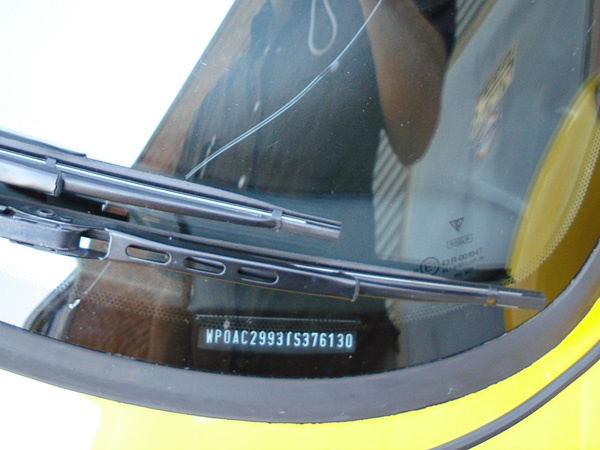Every car manufactured has a unique identifier for it known as a VIN or Vehicle Identification Number. “It is the automotive equivalent of human DNA” as stated from www.vanguard.org. Each letter and number in a VIN corresponds to specific information about that specific vehicle as the DNA in your body provides instructions for your genetic makeup.
Around 1954, automobile manufactures began using an identification number to identify cars. However, these numbers were non-standard and often manufacture specific. They ranged in the number of characters and types of characters used. Cars beginning model year 1981 were required by the NHTSA to use a 17-character VIN with a specific, standard format. This is what is still used today. It's worth noting that the new, standard VIN format does not use the letters “I”, “O” or “Q” to prevent confusion with similar looking numbers.
Where to find your VIN
A vehicle’s VIN can be found etched into a metal plate that is affixed underneath the windshield at the top of the dashboard (closest to the hood). Manufacturers often put the VIN on a sticker in the driver’s doorjamb as well along with tire pressure information. From there, the number of additional times as well as location of your VIN varies from car to car. For example, my Audi has the VIN etched in a metal plate above the engine whereas this is not the case in my Volvo. Often time new cars go through a process called VIN etching where the VIN is etched into the windows of a car as a deterrent for theft. As another theft deterrent, automakers sometimes stamp the VIN or part of the VIN on body panels and perhaps even the engine. Should the car ever be stolen, this devalues those parts. Some dealers will do VIN etching for free with the purchase of a new vehicle from there (or they even do it prior to sale). In my experience, simply asking a dealer to etch your VIN on your current car can be done.

Uses
Outside of the obvious of being a unique identifier for an automobile, your VIN has a few other uses. It can be used to track your vehicles history with common sites like carfax.com and autocheck.com. Also many auto manufacturers change/update parts on models before or after a “VIN break” or before or after the change in the last few digits in a VIN number. This is important when ordering parts such as timing belt kits or perhaps certain suspension components.
It’s always a good idea to run a vehicle history report or at least a VIN check (free) on a used vehicle you are considering purchasing. This way here, you will know if that VIN number matches the vehicle being sold.
Decoding a VIN
As stated above, each character or set of characters corresponds to specific information about your vehicle.
Consider this example VIN number from my 1998 Volvo V70R:
YV1LW5244W2522*
(The last few digits were purposely disguised)
The first 3 characters, YV1, are the WMI or World Manufacture Identifier. The first character, Y, represents the vehicle's country of origin. The second character, V, represents the manufacture and finally the 3rd character of the WMI, 1, for manufactures with more than 500 vehicles, represents a division of the make or the type of vehicle it is. If the vehicle manufacture produces less than 500 cars, then a 9 is used in the 3rd spot. The coding for the WMI is managed by the SAE (Society of Automotive Engineers).
Characters 4 – 9, LW5244, are the Vehicle Descriptor Section or VDS. These are make specific and describe the vehicle with information such as body style, engine code, transmission type, model and safety systems. The 9th digit, 4, is a check digit. This is determined by a formula to determine the validity of the VIN.
Characters 10-17, W2522*, are the Vehicle Identifier Section or VIS. The 10th character, W, is the model year. The 11th character, 2, is the plant where the vehicle was made. Again, that is making specific. The last characters are the production sequence/order of your car.
Lets see a breakdown of my Volvo V70R’s VIN!

Here is a list of WMI codes to help you decode your own VIN.











